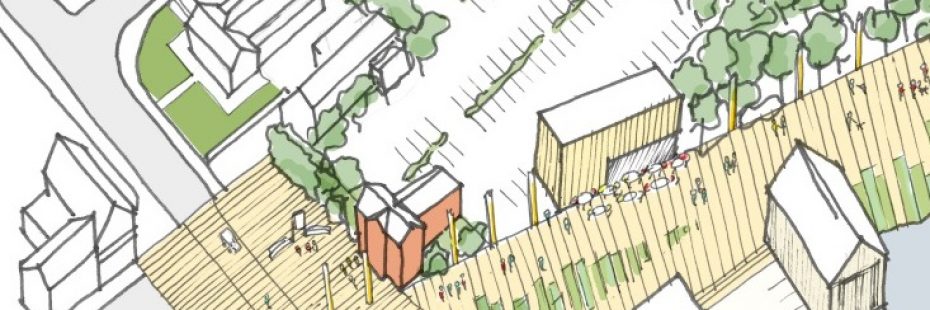
Rural Development Outcome RD1:
The Park’s towns and villages are enhanced through investment in their built and historic environment, public spaces and infrastructure.
Why is this outcome important?
The National Park is home to 15,168 people living in towns and villages, and throughout the rural areas. Our location, so close to central Scotland’s cities and towns, creates many opportunities for tourism and business investment as well as access to employment, labour pool, services and facilities – particularly hospitals, and secondary and further education.
This proximity to the cities also brings challenges, including visitor pressures and congestion in the Park’s towns and villages at peak times of the year, development pressures, and a pressurised housing market. The opportunities and challenges differ considerably between the more accessible and pressured, southern and eastern parts of the National Park and the more remote rural areas in the north and west.

Planning Station Square in Balloch
The Park’s towns and villages are varied and diverse in their size and characteristics, and retain a strong sense of place and local distinctiveness. These range from the Victorian-influenced Clyde coastal communities in Cowal; to planned estate villages and towns in Loch Lomond and The Trossachs such as Luss, Gartmore and Callander; and highland villages in the north of the Park such as Strathyre, Killin and Crianlarich. We also have numerous small, dispersed rural communities, some relatively remote and some accessed only by single track roads.
Over the past five years the Park Authority has undertaken extensive engagement with our communities, businesses and landowners through charrettes (design-led workshops) and community action planning. These efforts to work collaboratively have produced strong visions for the Park’s towns and villages. Callander and Balloch have important roles as visitor hubs, while Arrochar and Tarbet have significant potential if marine facilities are developed, to take advantage of their lochside locations.
Our priorities for action:
- Rural Development Priority 1: Delivery of the key sites and infrastructure in Arrochar, Balloch and Callander, as well as villages identified as Placemaking Priorities identified in LIVE Park, the National Park’s Local Development Plan

Lomond Shores
- Rural Development Priority 2: Supporting appropriate public realm improvements where strategic roads pass through tourism destinations, including the A84 through Callander, the A82 through Tarbet and at Balloch station and the A83 through Arrochar.
- Rural Development Priority 3: Conserving and enhancing the built and historic environment in all towns and villages, including supporting the repair and restoration of traditional and landmark buildings.
- Rural Development Priority 4: Supporting increased or improved active travel options within and between communities.
- Rural Development Priority 5: Adapting to and building resilience against the effects of climate change, such as flooding in towns and villages, and encouraging high quality, sustainable new development and design that reinforces local distinctiveness and embodies low and zero carbon technologies.
Who can help make this happen?
| Lead delivery partners include: |
| Local Authorities |
| Landowners |
| Developers |
| Businesses |
| Community Development Trusts |
| Community Councils |
| SUPPORT DELIVERY PARTNERS: |
| Sustrans |
| Historic Environment Scotland |
| SportScotland |
| Transport Scotland |
| Scottish Environment Protection Agency (SEPA) |
| Heritage Lottery Fund |
| Clyde Marine Planning Partnership |
| Housing Associations |
How will we measure success by 2023?
- The number of sites developed and projects delivered focussing on built environment and public realm enhancement.
- The number of Active Travel Schemes implemented.
- The increase in the percentage of planning approvals for development incorporating zero and low carbon technologies.
Questions
|

